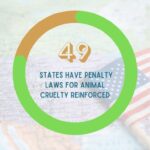Animal cruelty laws exist as a protective armamentarium for those who cannot voice their own suffering. Writing a persuasive essay on this subject requires more than mere statistics; it requires an exploration of ethical considerations, emotional appeals, and even legal intricacies. This essay will prompt critical dialogue by examining a multitude of questions centered around animal cruelty laws. By reframing the issue through various lenses, it becomes possible to better understand the importance of solidifying and expanding these laws.
Understanding the Legal Framework
To adequately address animal cruelty laws, one must first inquire about the existing legal framework. What statutes define animal cruelty in different jurisdictions? Understanding the baseline of these laws is crucial. Some states classify neglect as cruelty, while others have a broader definition. This variation begs the question: How effective are these laws in providing tangible protections for animals? If disparity exists within state lines, where does the responsibility lie? Challenging the legal definitions can reveal gaps in protection and enforcement.
Moreover, how have animal cruelty laws evolved over time? The historical perspective creates a backdrop against which current practices can be scrutinized. An investigation of landmark cases may reveal how societal values shift and how those shifts influence legal frameworks. This evolution illustrates the importance of continual advocacy and legal reform, raising the question: Are we playing catch-up to the ethical considerations of our time?
The Psychological Perspective
Transitioning from legal mechanisms to psychological implications, one must ask: What psychological factors contribute to acts of animal cruelty? Understanding the mind of an abuser unveils layers that are often overlooked. Is animal cruelty a manifestation of broader social issues, such as violence or disconnectedness? This inquiry encourages an exploration of preventative measures that extend beyond the courtroom, linking education and psychological intervention.
Furthermore, how does witnessing or participating in animal cruelty affect individuals psychologically? The ripple effect of such actions not only harms the animal but also alters the psyche of the perpetrator and the community. Reflecting on this question leads to essential discussions surrounding rehabilitation programs aimed at addressing abusive behaviors before they escalate and uncovering the interconnectedness between animal and human welfare.
The Ethical Dilemma
Delving into the ethical realm, one might ponder: What moral obligations do humans have toward animals? This contemplation taps into philosophical ideologies about sentience, welfare, and rights. The animal rights movement posits that animals possess inherent rights, challenging the utilitarian perspective that measures the “greatest good” for the majority. By exploring these ethical conflicts through an essay, one can expand upon various viewpoints while directing attention to the largely unrecognized moral obligations that society tends to ignore.
Beneath the layers of advocacy, the issues of exploitation arise. How do systemic structures perpetuate animal cruelty for profit, entertainment, or convenience? This examination could extend to industries like factory farming, entertainment, and even the fashion industry, prompting questions about consumer responsibility. What role do we play as consumers in perpetuating animal cruelty, and how can we effect change through conscious choices?
Voices for the Voiceless
Transitioning to the perspectives of activists and organizations, one must ask: How effective are advocacy efforts in combating animal cruelty laws? This topic encompasses a wide spectrum of strategies, from grassroots campaigns to legislative lobbying. It requires dissecting the methodologies employed by organizations. Are they galvanizing public opinion, or are they lost in bureaucratic processes? An effective persuasive essay is incomplete without critically assessing the impact of these campaigns, questioning their outreach and engagement levels.
Moreover, who are the voices for the voiceless? It is essential to elevate the stories of animals who have endured cruelty, as these narratives have the power to humanize the statistics. In what ways can storytelling and personal testimonies serve as catalysts for change? By drawing attention to individual stories rather than abstract figures, an emotional connection is forged, urging readers to consider their social responsibilities.
Global Perspectives
In a world that is increasingly interconnected, one must consider: How do animal cruelty laws vary internationally, and what can be learned from those disparities? An exploration across borders illuminates the socio-economic, cultural, and political variances in the treatment of animals. Are there countries that exemplify progressive approaches to animal rights, and what lessons can they impart? A comparative analysis can amplify calls to action, providing distinctive avenues for advocacy grounded in global dialogue.
Finally, as one concludes the exploration of animal cruelty laws, a significant question remains: What does the future hold for animal welfare legislation? This serves as a clarion call for continued awareness and evolution. The fight against animal cruelty is not merely a present-day struggle; it is an ongoing collective endeavor that requires perpetual vigilance and adaptation. Aspiring advocates and legislators must engage with this critical conversation, ensuring that future laws reflect a compassionate and equitable society.
This exploration through questions not only constructs a persuasive essay; it also seeks to ignite the conscience of readers, urging them to act, to reflect, and to advocate for a world where animals are treated with the dignity they deserve. In doing so, we forge a pathway to compassionate legislation that embodies our moral imperatives and enriches societal values.







